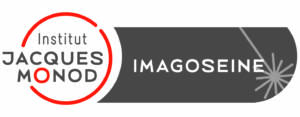Conventional flow cytometry (analysers and sorters)

The emitted and interest signals (Scattering properties, autofluorescence, fluorescence) are collected by photodetectors (PMTs). The light signal is converted into an electrical pulse, then into an analogue signal.
Several signals are collected:
– the light scattered at small angles (Forward Scatter, FSC) is collected in the axis of the laser beam. It corresponds to the diffraction and is primarily determined by the size of the interrogated cell.
– the light scattered at large angles (Side Scatter, SSC) is collected at 90° to the laser beam. It is a mixture of scattering, reflection and refraction which gives information on the internal structure of the cell,
– the fluorescence is collected at 90° to the light beam. It can be an autofluorescence (light emitted by the cell itself) or result from a marking by one or more fluorochromes.
In the case of sorting, a piezoelectric quartz creates a vibration on a nozzle at the outlet of the flow cell, producing a ripple of the liquid stream that will break up into droplets.
When the cell analysed corresponds to a cell of interest (classified in a sorting window), an electric charge is applied to the whole liquid stream when this cell is at the end of the jet. The droplet then detaches from the jet while keeping the excess charge (+ or -). Then it is deflected according to this charge by passing between two high voltage plates creating an electromagnetic field to be collected in a tube or in a multi-well plate.
By adjusting the intensity and polarity of the electric charge applied to the whole jet, it is possible to sort several populations simultaneously.
Flow cytometers inherently have optical, fluidic, and electronic systems, but with different properties.
The main applications are :
– Immunophenotyping
– Cell cycle, cell proliferation measurement, genome size
– Viability, Apoptosis
– Gene expression by fluorescent reporter protein (GFP, mCherry, mScarlet, FRET sensor…)
– Functional analysis, metabolic flux
Some measurements can be associated with each other and accompanied by a sorting of the cells based on the analysed properties.
AVAILABLE EQUIPMENT
BD FACSAria Fusion
Optical configuration: 5 lasers, 18 PMTS
– Blue: 488nm (4 parameters)
– Red: 633nm (3 parameters)
– Violet: 405nm (4 parameters)
– YG: 561nm (4 parameters)
– UV: 355nm (3 parameters)
BD Accuri C6 plus
2 lasers, 4 detectors
– Blue: 488nm (3 parameters)
– Red: 640nm (1 parameter)

